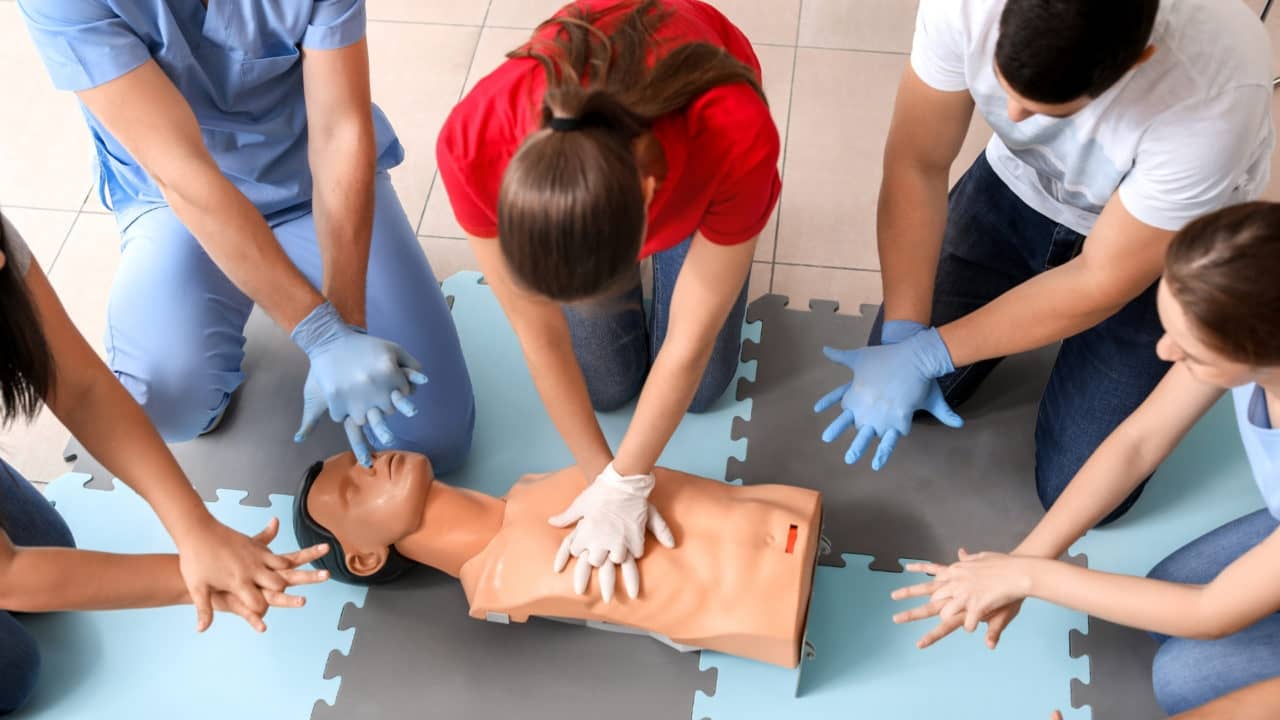Introduction
In today's fast-paced work environment, safety is vital. Organizations are progressively acknowledging the significance of developing a safe space for employees. One of the most crucial components of work environment safety and security training is initial aid and mouth-to-mouth resuscitation (Cardiopulmonary Resuscitation) courses. These courses not just empower employees with necessary life-saving abilities but likewise foster a culture of safety within the company. In this article, we will look into the myriad reasons why workplace safety and security training must include emergency treatment and mouth-to-mouth resuscitation training courses, highlighting their value in improving workplace safety.
Why Workplace Safety and security Training Ought To Consist Of First Aid and Mouth-to-mouth Resuscitation Courses
The combination of emergency treatment and mouth-to-mouth resuscitation training courses right into work environment security training has far-ranging advantages. They furnish staff members with the expertise and skills essential to respond successfully to clinical emergency situations, reduce recuperation time for injured people, and possibly conserve lives. In addition, having trained personnel on-site can impart self-confidence among employees and assure them that their wellness is prioritized.
Understanding Initial Aid
First help describes the prompt treatment given to an individual suffering from a small or major illness or injury up Adelaide first aid training nearby until professional medical aid shows up. Comprehending basic emergency treatment concepts can make a considerable difference in emergency situation situations.
Key Elements of First Aid
Assessment: The capacity to analyze a circumstance quickly can help establish the proper activities needed. Stabilization: Recognizing how to maintain a wounded person prevents additional harm. Communication: Properly communicating with emergency solutions is crucial for prompt assistance.The Value of CPR
CPR is a life-saving strategy made use of in emergency situations when a person's heartbeat or breathing has actually quit. It includes chest compressions and rescue breaths to preserve blood flow and oxygenation up until expert assistance arrives.


How CPR Works
- Chest Compressions: These aid circulate blood throughout the body. Rescue Breaths: These supply oxygen to the lungs.
Benefits of Emergency treatment and Mouth-to-mouth Resuscitation Certification
Obtaining a first aid certification or completing CPR courses comes with countless benefits, both for people and organizations.
Enhanced Staff member Confidence: Staff members feel extra secure knowing they have life-saving skills. Reduced Recovery Time: Quick feedback through first aid can bring about better results for damaged individuals. Compliance with Regulations: Several sectors need licensed personnel as part of their health and safety regulations.Creating a Culture of Security Via Training
Implementing first aid and CPR training fosters a society that prioritizes worker well-being.
Encouraging Teamwork
Training sessions frequently include team-building exercises that improve collaboration amongst employees.
Building Count on Between Staff members and Management
When management buys worker training, it reveals commitment to their health, leading to enhanced morale.
First Help Surges vs. CPR Courses: What's the Difference?
While both kinds of training courses are important, they concentrate on various skill sets.
First Aid Courses
These courses cover a vast array of subjects past simply cardiac emergency situations, consisting of:
- Wound care Burns Choking
CPR Courses
CPR programs especially concentrate on strategies associated with heart attack circumstances, highlighting:
- Adult CPR Child/ infant resuscitation Use of an Automated External Defibrillator (AED)
Choosing the Right Training Provider
Not all training suppliers are developed equal; consequently, choosing one that fulfills your company's demands is critical.
Accreditation Matters
Ensure that your chosen provider supplies accredited training courses identified by appropriate authorities.
Instructor Experience
Consider trainers' credentials; experienced fitness instructors often offer richer understanding experiences through real-world examples.
Incorporating Emergency treatment into Workplace Security Policies
Organizations must integrate first aid requirements right into their wider security plans for detailed coverage.

Regular Training Updates
Conducting routine correspondence course ensures that knowledge continues to be existing among employees.
Creating Emergency situation Feedback Plans
Having clear strategies in place can direct skilled workers during emergencies.
Legal Effects of First Aid Training in the Workplace
Employers have legal responsibilities pertaining to work environment safety; applying emergency treatment training can help mitigate risks connected with non-compliance.
Negligence Claims
Failure to give ample training may leave Belmont workplace first aid employers susceptible to legal actions if a case happens because of lack of preparedness.
FAQ Section
What is included in a regular emergency treatment course?- A typical emergency treatment course includes direction on assessing injuries, dealing with wounds, handling burns, handling choking incidents, and executing CPR if necessary.
- Most mouth-to-mouth resuscitation programs last in between 4-- 6 hours relying on whether it's standard or advanced training.
- While not constantly lawfully mandated, having actually certified personnel can significantly improve work environment security standards.
- Many approved companies supply on-line revival choices for emergency treatment certifications that include assessments by means of video conferencing.
- Yes, sectors such as building and construction, health care, education and learning, and manufacturing frequently have regulative needs requiring skilled employees on site.
- It's recommended that staff members participate in refresher courses every 2 years or quicker if there are considerable modifications in treatments or regulations.
Conclusion
To sum up, incorporating emergency treatment and mouth-to-mouth resuscitation into work environment safety training is not just an option however a need in today's workplace where emergencies can occur at any moment. Organizations http://cesarzais198.lucialpiazzale.com/neighborhood-heroes-the-impact-of-cpr-training-on-area-safety-and-security advantage exceptionally from having educated personnel prepared to respond properly during crises while fostering an ambience where employee well-being takes priority over all else. Consequently, it ends up being obvious why workplace safety training need to include first aid and CPR training courses-- they save lives while advertising a positive technique towards health and wellness criteria within organizations across various sectors.
By focusing on such crucial training efforts-- emergency treatment certificates acquired through credible companies together with useful hands-on experience-- business can considerably boost their total emergency readiness degrees while additionally building stronger teams efficient in taking on any situation head-on!